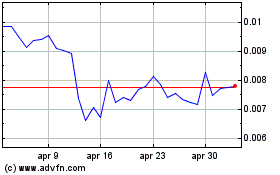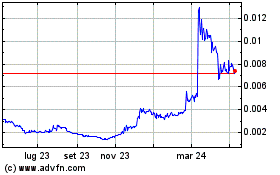Scaling the EVM requires an L1, not an L2
08 Aprile 2025 - 5:00PM
Cointelegraph


Opinion by: Jay Jog, co-founder of Sei
Labs
When CryptoKitties crashed the Ethereum network in 2017, the
industry learned a hard lesson about blockchain scalability. Today,
with over $100 billion
locked in decentralized finance (DeFi) and millions of
non-fungible tokens (NFTs) being traded, that lesson is more
relevant than ever. The Ethereum Virtual Machine (EVM) — the engine
that powers this activity — is reaching its limits.
So far, the crypto community’s answer has been layer 2 solutions
— separate chains that process transactions and report back to
Ethereum. But what if the community’s been looking for answers in
the wrong place?
Layer 2s are not the solution
Layer 2 blockchains have long been touted as the solution to the
EVM’s performance challenges, given their ability to offload the
computational work from Ethereum to a secondary chain. Layer-2
solutions have proven to be nothing more than a “quick fix” instead
of a permanent solution, as many hoped for. As Gemini reported, a
new layer 2 appeared every 19 days in 2024, indicating that the
competitive landscape is creating more problems instead of solving
them.
Layer 2 solutions come with their own challenges, primarily tied
to centralization and interoperability. Many of today’s layer 2
blockchains run with centralized sequencers that could expose the
network to transaction censorship, transaction reordering and more.
Additionally, Vitalik Buterin stated in a recent blog post that
layer 2s are struggling to maintain interoperability. This called
attention to the disorganized state of layer 2s, further
contributing to liquidity fragmentation and a complex user
experience.
Recent:
L2 gaming activity spikes in February, but wallets
decline — Report
Advanced rollup designs have tried to fix these pain points.
Recently, there has been a new design called native rollups that is
trying to tackle layer 2’s centralization issues.
Native
rollups take value away from projects, which will significantly
deter adoption. Consequently, it is doubtful that native rollups
are the answer to all of Ethereum’s urgent problems.
With just as many challenges as the EVM itself, why rely on
layer 2s instead of looking elsewhere? Could there be a better
solution? According to L2BEAT, it costs around
$95.53 million annually to run all the
major L2s. Instead of spending more money on building and running
more L2s and interoperability solutions, why not focus on refining
the existing foundational layer?
A more accurate alternative to TPS
To create the most performant layer 1s, the industry must first
reevaluate the approach to track blockchain performance. Most
blockchains focus on throughput, using transactions per second
(TPS) to compare chain performance. While many argue that reaching
the most significant transactions per second is the way to enable
mainstream adoption for crypto, TPS unfortunately doesn’t allow for
apples-to-apples comparisons since different types of transactions
require different amounts of compute.
For example, an Ether (ETH) transfer requires 21,000 units of
gas, whereas an ERC-20 transfer needs 65,000, confirming that TPS
conveys zero value when tracking mass transactions and network
throughput.
A new standardized performance metric that better reflects
network computing capability must be developed to understand a
blockchain's full potential. This is where an alternative
performance metric called “gas per second” emerges — a measure that
evaluates the gas fees required to process transactions, better
reflecting different transaction types. While TPS is best served to
assess simple ETH transfers, gas per second shows the bigger
picture by considering all computational efforts, even for complex
transactions.
Given the novelty of this metric, measuring gas per second
across all chains will be a long process but a crucial step in
blockchain’s evolution.
Going back to the basics: Layer 1s
The capability of layer 1s has historically been overlooked, as
many Ethereum researchers focused on a rollup-centric roadmap. As
the backbone of the entire crypto ecosystem, layer 1s are the key
to scaling the EVM. To solve EVM’s scalability challenge, layer 1s
must start rebuilding the EVM from scratch with performance in mind
above anything else.
The EVM faces severe network congestion and high gas prices as
volume increases. It’s time for layer 1s to scale to onboard the
next generation of users. Approaches such as parallelization will
help improve throughput and, combined with transforming the EVM’s
consensus mechanism and storage solutions, will set a new
performance standard for the industry and establish a more
developer-friendly environment for projects.
The proper solution to scaling the EVM
For the past few years, Layer 2s have been presented as the
answer to providing the cheapest and fastest way to execute
transactions. Layer 2s are not what the EVM truly needs. From day
one, Layer 1s have always been the true solution to the EVM’s
scalability problem.
It is time to be open to adopting more accurate performance
metrics and divert attention to improving network performance.
These changes will pave the way for the EVM to achieve its highest
potential, introducing levels of scalability and efficiency never
seen before. The EVM is here to stay, but its future depends on the
industry to build.
Opinion by: Jay Jog, co-founder of Sei
Labs.
This article is for
general information purposes and is not intended to be and should
not be taken as legal or investment advice. The views, thoughts,
and opinions expressed here are the author’s alone and do not
necessarily reflect or represent the views and opinions of
Cointelegraph.
...
Continue reading Scaling the EVM requires an L1, not
an L2
The post
Scaling the EVM requires an L1, not an L2
appeared first on
CoinTelegraph.
Grafico Azioni Amp (COIN:AMPUSD)
Storico
Da Mar 2025 a Apr 2025

Grafico Azioni Amp (COIN:AMPUSD)
Storico
Da Apr 2024 a Apr 2025
